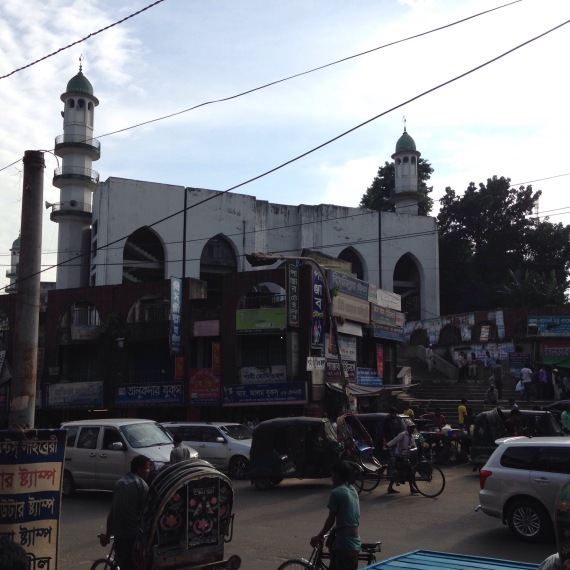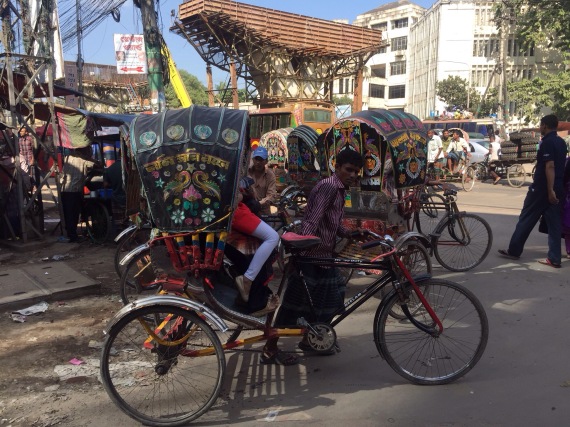Part of the countdown to time away is the email from the third party booking company reminding you of your latest adventure. Usually it’s full of stuff to do, the rainy day high brow stuff, the cool cat stuff, the restaurants you can’t afford stuff as well as the nuts and bolts of your itinerary. The Chittagong email came through five days before I set off. Ominously, although the ever present itinerary was faithfully there, the correspondence contained no travel guide, just a generic picture of a bicycle that they’d clearly run out of space for as part of their guide to Indian destinations.Checking in at the hotel, I was informed, on asking for a map of the city that, sorry sir, such a thing didn’t exist. Welcome to Chittagong, probably best you make it up as you go along! Having persuaded the elder statesman on the hotel reception desk to give us at least the nucleus of an itinerary we jumped in the nearest tuk-tuk and headed into the heat and haze of Bangladesh’s third most populated city.
Magnificently ramshackle, Chittagong is a treasure trove of consumer durables, scrap iron and miscellaneous ol’ toot. Areas of the town are marked out by the stuff they peddle there, with areas for ceramics, wrought iron pipes, hoses and plastic toy three wheeler tricycles all possibly delineated on the map that doesn’t exist. Steptoe and Son and, indeed, Del-Boy would doubtless love it here, so too the two old coves from the greatest Two Ronnies sketch. I’m sure somewhere within this port city there is an area where purveyors of handles for forks vie for punters. As our tuk-tuk driver pluckily battled his way amongst the hierarchy of Bangladesh road users (pedestrians are the plankton, lorries the killer whales, the rest sit somewhere between the two) we drank it all in (noxious exhaust fumes and all).
Bangladesh is one of the world’s most populous nations and seemingly much of life is spent from getting from A to B at all hours of the day. For people watching, this is absolutely wonderful. Old fellows push wagons laden with fresh spices along the side of the road, they are overtaken by even older fellows who slowly pant and painfully pedal their wrecked bicycle rickshaws past. In an isolated nod to the Health and Safety culture that bestrides our culture, the tuk-tuks here have cages welded on for passenger safety and comfort, which is different from the ones I’ve previously experienced in India and Sri Lanka. The cars carry scrapes and bumps as well as crash bars, Hi-Aces of all vintages take their place in the road race too. People cram on and cling to tops of buses, while lorries, as they do back in Blighty, mess it all up for everyone else.
And it’s not what they drive around here, but how they drive that makes for such compelling viewing. Roundabouts are guidelines, one way streets are a challenge and he who dares- and it’s almost always ‘he’ behind the wheel- definitely wins. The curiosity gets the better of me, and during a particularly overcrowded late morning spell around the Jubilee Road at the heart of the city, I go to find the one of the local policeman to get an insight into the world of the Chittaging traffic cop. As with many of his colleagues, the constable is helpfulness personified and shakes my hand and poses for a photo. He then hands me the microphone into which he’d been barking out orders. If the traffic were paying scant attention to him, there’s little chance they’ll listen to me. Undaunted, I bid the city’s drivers a hearty good morning before heading off into the crowds.
Away from the traffic, the richness of the architecture- or lack of it- is also something to behold. Having got lost in the myriad of atmospheric, haphazardly constructed in tunnels and avenues among Chittagong’s backstreets, we visit the city’s ancient court building, an enchanting, imposing looking building painted vivid pink. Whether it was this hue when it was built by the British- or, more than likely, built by the horse-whipped locals as the British looked on- is debatable. This city has colour of all shades which cheerfully mark out all manner of dwellings and landmarks from Chittagong’s many and varied mosques to its multi-faceted markets. Plus there’s trees, lots of lovely trees. Statues of the famous Bengal tiger crop up around and about, and although there is plenty of lush jungle-like vegetation, the big cats are, sadly, nowhere to be seen.
Chittagong, like life, is what you make of it. My nine days in Bangladesh have been enlightening, and for all kinds of reasons. The locals have been friendly and welcoming. Cricket brought me to see this great city, and, alas it’s unlikely, unless England rework their Test Match schedule in the near future, that I’ll return here soon. If I do come back, I’ll not need a map to help me out. All things considered, there’s nothing much to do in Chittagong, but plenty.




